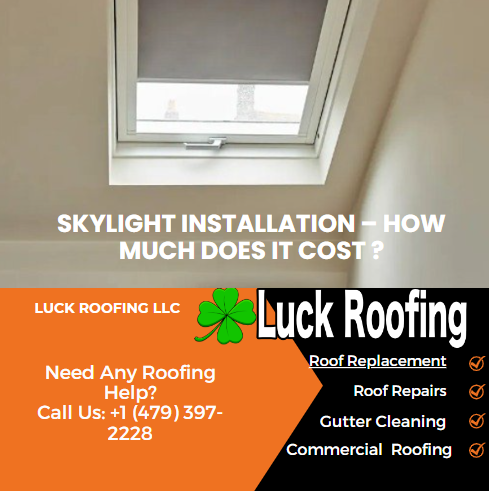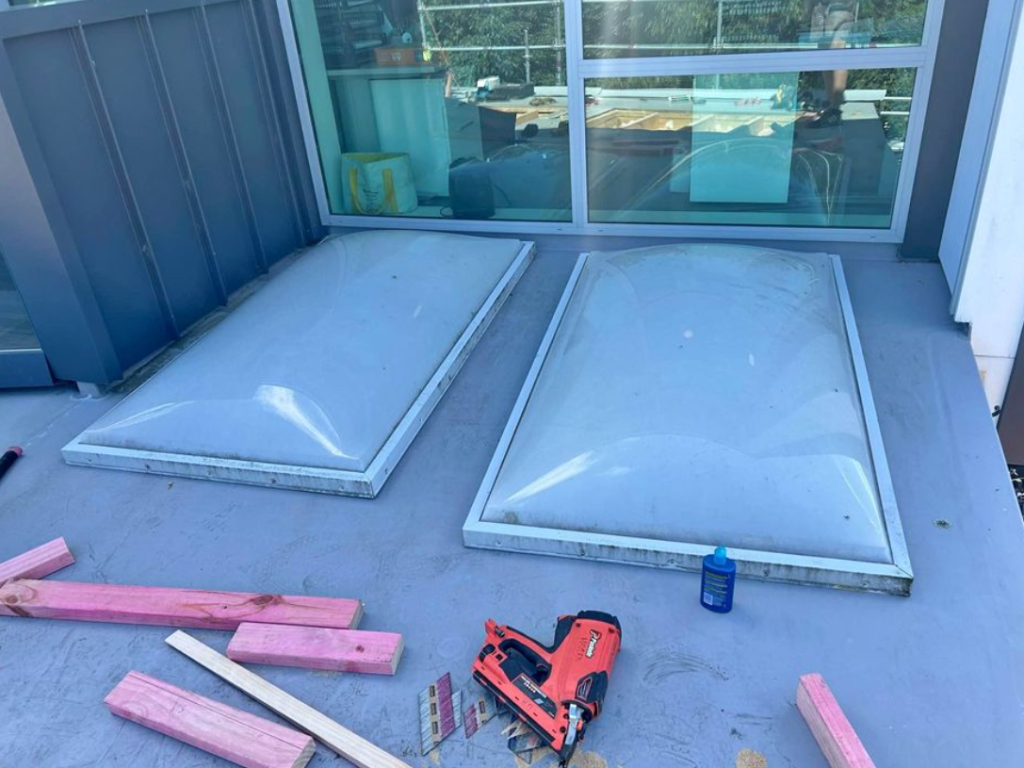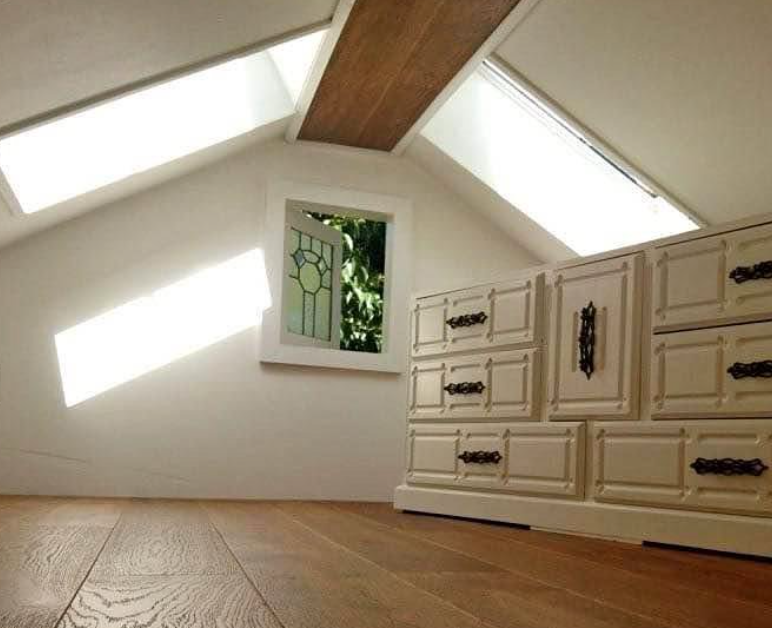
The installation of a skylight is a significant investment that can transform the ambiance of a space, allowing natural light to permeate and brighten the room. However, it’s essential to understand the financial implications that such a project may entail.
The installation cost of a skylight can vary widely, depending on several elements such as the type and size of the skylight, the complexity of the installation, the materials used, and the geographic location of the property. It also considers additional costs like sales tax, building permits, and possible electrical work.
This discussion aims to illuminate these factors, assisting homeowners in making an informed decision about their skylight installation project.
Key Takeaways
- The cost of skylight installation can vary based on factors such as the type, size, and shape of the skylight, as well as regional variations in labor and material costs.
- On average, skylight installation can cost around $1,750, but the final cost can fluctuate based on various factors.
- Different types of skylights have different price ranges, with fixed skylights generally being more affordable compared to ventilating skylights.
- While DIY installation may be less expensive, hiring a professional ensures expertise and reduces the risks of improper installation and safety hazards.
If you’re contending with roofing issues in your roof or thinking about a new setup, our top-tier roof repair company in Arkansas is ready to assist. Here at Luck Roofing, we provide superior roofing solutions to Fort Smith and the nearby areas. Please feel free to contact us at (479) 397-2228 for professional consultation. Your project merits the outstanding standards and dependability we provide.
Average Skylight Installation Cost
 Digging into the financial aspect, the average cost for skylight installation hovers around $1,750, but the final figure can fluctuate significantly based on a variety of determinants such as size, shape, type, and additional influencing factors.
Digging into the financial aspect, the average cost for skylight installation hovers around $1,750, but the final figure can fluctuate significantly based on a variety of determinants such as size, shape, type, and additional influencing factors.
The average skylight installation cost varies depending on the size and shape of the skylight. For instance, a 25-inch by 41-inch skylight ranges from $325 to $650, while a 49-inch by 49-inch skylight can cost between $550 and $2,200. The shape also influences skylight installation costs. A square skylight may cost between $175 and $2,225, while the cost of skylight installation for a circular one ranges from $400 to $1,000.
The type of skylight further affects the cost, with prices ranging from as low as $175 for fixed skylights to as high as $3,500 for ventilating skylights. Labor costs also play a crucial role, particularly for complex installations or hard-to-reach locations. Additionally, the cost may be influenced by the number of skylights installed, the framing material, the brand, and whether the installation is residential or commercial.
Ongoing maintenance expenses can also add to the overall cost of installing a skylight.
Factors Influencing Skylight Cost
While the average cost of skylight installation provides a baseline, it’s important to understand that several key factors can significantly influence the final price. Notably, the factors influencing skylight cost hinge on both the product’s characteristics and the specifics of the installation process.
The type of skylight selected will directly impact the skylight installation cost. Options range from fixed and ventilating to tubular skylights, each with their own price points. Additionally, the size of the skylight plays a crucial role in determining the final cost, with larger skylights typically costing more due to the additional materials and labor required.
The professional installation process also factors into the overall cost. More complex installations or those in hard-to-reach locations may require additional labor, driving up the price. Moreover, regional differences can cause variation in labor and material costs.
Some key considerations include:
- The type of skylight (fixed, ventilating, tubular)
- The size and shape of the skylight
- The complexity of the professional installation process
- Regional variations in labor and material costs
Understanding these factors can help homeowners make informed decisions about the potential costs involved in skylight installation.
Skylight Installation Costs By Type
The cost of skylight installation is significantly influenced by the type of skylight chosen, with prices varying widely based on factors such as size, shape, style, and the materials used for framing. For instance, fixed skylights, a popular type, range from $175 to $1,600, while ventilating skylights, which allow for increased airflow, can cost between $2,000 to $3,500 to install.
The size of the skylight also affects the overall installation cost. Smaller skylights typically cost between $325 to $650, while larger options can cost anywhere from $550 to $2,200.
The shape of the skylight plays a role too, with square skylights costing $175 to $2,225, and pyramid skylights ranging from $550 to $3,500.
The skylight installation costs by type are also influenced by the materials used for framing. Metal frames range from $225 to $1,600, vinyl frames from $175 to $1,225, and wood frames from $350 to $2,750.
Therefore, when considering the types of skylights and the cost to install, it is essential to factor in the average cost of these different aspects to get a more accurate estimate.
Professional Vs. DIY Installation

In considering skylight installation, it’s crucial to weigh the pros and cons of professional versus DIY approaches. Hiring a professional installer for your skylight can ensure expertise in weatherproofing, roof cutting, and building the light well or shaft. This results in a comprehensive, quality installation that can increase the value and efficiency of your home. However, the professional skylight installation cost is generally higher due to the labor and skill involved.
On the other hand, a DIY skylight installation can be less expensive, especially with simpler options like tubular skylights. But it carries inherent risks:
- There’s a potential for improper installation, leading to leaks and damage.
- Insulating the light well or shaft can be a complex, separate project.
- Errors can result in safety hazards during installation.
- The quality and efficiency of the finished product may be compromised.
Cost-Saving Tips For Skylight Installation
Saving on skylight installation costs involves strategic decisions on skylight size, type, framing material, and contractor selection, along with considering long-term maintenance expenses.
Smaller, standard-sized skylights are typically more cost-effective, and simpler shapes like squares or rectangles generally incur lower installation costs. The type of skylight also significantly impacts the costs; fixed skylights tend to be the most affordable, while ventilating and tubular skylights may come with higher expenses.
The material chosen for framing can also affect the skylight installation cost. Vinyl framing, for instance, is often the least expensive, but wood framing, while costlier, can offer a timeless aesthetic. Keep in mind that costs vary by location, with labor and material prices fluctuating regionally.
Choosing the right contractor is crucial. Seek multiple quotes to ensure you’re getting the best value when installing a new skylight.
Lastly, beyond the initial cost, consider the long-term expenses, like cleaning and maintenance, for a comprehensive understanding of the cost-saving tips for skylight installation. Making these informed decisions can help you significantly reduce your skylight costs.
Brand Comparison: Skylight Costs
Having explored the various factors that influence the cost of skylight installation, let’s now compare the costs associated with different brands, to further aid in making an informed decision. The skylight brands on our radar are renowned skylight manufacturers with established reputations in the market.
Here is a brand comparison: skylight costs vary across different manufacturers. Let’s consider four well-known brands:
- Farko skylights, with prices ranging from $400 to $3,000
- Pella skylights, with a price range of $200 to $1,800
- Sun-Tek skylights, costing between $300 to $3,000
- Velux skylights, which are priced between $1,200 to $3,800
As we can see, skylight prices fluctuate significantly based on the brand. It’s also worth noting that multiple installations can be less expensive on a per-unit basis. Therefore, it’s recommended to consider the skylight installation cost in the context of your specific project requirements and budget.
Benefits Of Installing Skylights
Skylights, beyond their aesthetic appeal, offer numerous benefits ranging from energy efficiency to enhancing interior design and even potentially increasing a home’s resale value. The benefits of installing skylights are manifold, providing both functional and aesthetic advantages.
One of the primary benefits is the ability to bring in natural light, reducing the need for artificial lighting and, in turn, helping to lower energy bills. The natural light from skylights can create a brighter, more open atmosphere, enhancing the interior design of the home.
Moreover, skylights can increase energy efficiency by providing free heat during the winter months, thereby decreasing heating costs. This eco-friendly feature is a testament to the value that skylights add to a home.
Finally, skylights can positively influence a home’s resale value. A well-maintained and properly installed skylight is considered a desirable architectural feature by many potential buyers, adding to the overall appeal of the property.
Therefore, while the skylight installation cost may seem significant initially, the long-term benefits in terms of energy efficiency, design enhancement, and added value make it a worthwhile investment.
Skylight Maintenance Costs
While the investment in skylight installation can yield significant benefits, it’s important to also consider the ongoing maintenance costs associated with these architectural features. The skylight installation cost is just the beginning of your financial commitment.
Skylight maintenance costs are an integral part of the total cost of your skylight. These costs can vary depending on the type and size of the skylight, as well as the climate and the quality of the initial installation.
Here are some potential skylight maintenance costs:
- Regular Cleaning: Skylights need to be cleaned regularly to ensure their longevity and maintain their appearance.
- Sealant Replacement: Over time, the sealant around your skylight may wear out and need replacing to prevent leaks.
- Glass Replacement: If the skylight glass becomes damaged, it will need to be replaced which can be costly.
- Professional Inspection: Hiring a professional skylight installer for regular inspections can help identify and fix issues early, potentially saving you from costly repairs in the future.
Questions For Skylight Installers
When considering a skylight installation, it’s crucial to ask your installer pertinent questions that can influence the cost and outcome of the project. This interaction can help you understand how skylights cost an average and what influences these charges.
The decision to install a skylight depends on various factors. Knowing these aspects can help you better budget for your project. Here are some of the questions for skylight installers that you should consider:
| Question | Why It’s Important |
|---|---|
| What factors influence the skylight installation cost? | Answers can help you understand the components of the overall cost, such as labor, materials, and permits. |
| Are there discounts available for installing multiple skylights? | Multiple installations might come with cost-saving opportunities. |
| Will I need an electrical setup? | Some skylights require an electrical setup for features like remote control operation, which adds to the cost. |
These questions can help guide your conversation with the installer, ensuring that you understand all potential costs associated with the project. By being well-informed, you can make the most out of your investment in a skylight.
Skylights And Home Value
The potential enhancement of home value is a significant consideration when contemplating the installation of skylights. Adding a skylight can be a strategic home improvement that potentially increases both the aesthetic and monetary value of a home. The skylight installation cost, although initially seen as an expense, can be viewed as an investment that adds to your property’s value in the long run.
When assessing skylights and home value, consider the following points:
- Skylights increase home value by introducing natural light and enhancing the home’s interior design.
- They provide free heat during winter days, which can lead to energy savings – a key selling point for potential buyers.
- The aesthetic appeal of skylights can improve the overall ambiance of a home, thereby increasing its market value.
- Conversely, skylights can also increase heat gain in warmer climates and may require additional maintenance, potentially affecting the perceived home value.
And To Conclude
In conclusion, skylight installation cost is influenced by numerous factors such as:
- The type, size, and shape of the skylight
- The roof type
- Frame and glazing materials
- Labor costs
- Accessibility
- Geographic location
Additional expenses such as taxes and permits also contribute. While professional installation may be more expensive, it ensures quality work.
Cost-saving tips, maintenance costs, and potential home value increase further underscore the importance of thorough planning when considering skylight installation.
Michael Overzat
Michael Overzat resides in Fort Smith, Arkansas with his wife and three kids. He enjoys to hike, skateboard, write, and get involved in charity organizations. He was originally born in Maryland. He has worked within the roofing industry for 5 years and is very active within the industry by attending conferences, masterminds, etc. His vision is to create a multi-state organization that has a customer centric model. He's worked for some of the biggest names in the industry and hopes to create a more people focused model for the roof replacement process.
